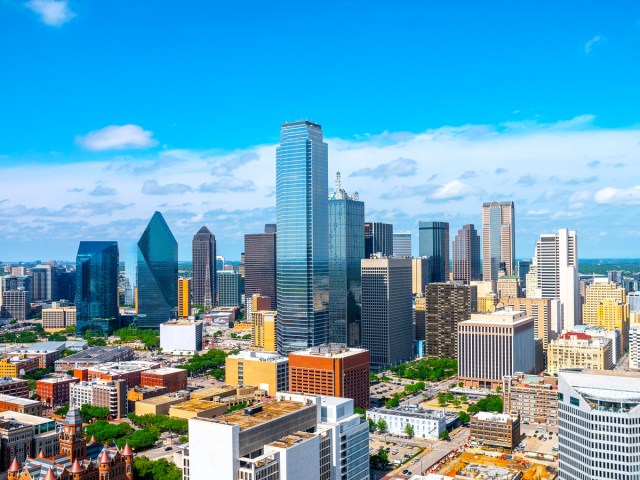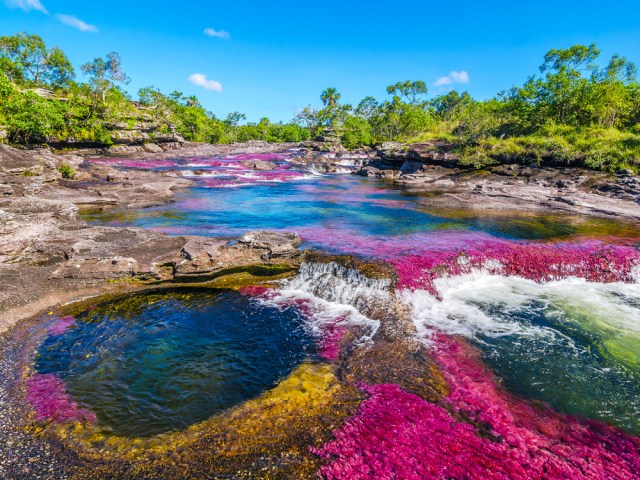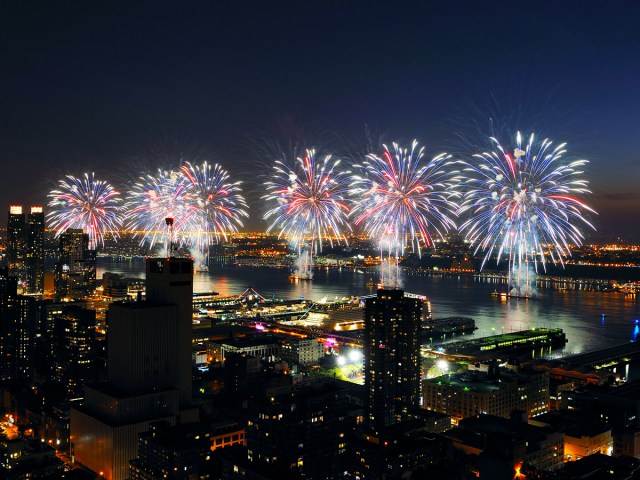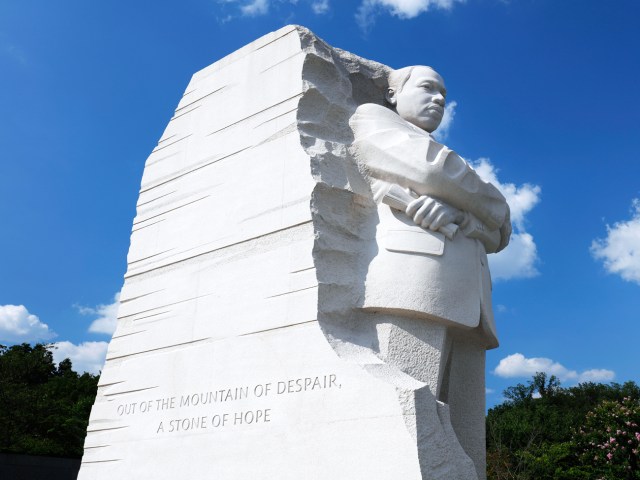Most people are aware that America is made up of 50 states, but the country also includes several overseas territories. Many are small, uninhabited atolls, but five of these territories are home to significant year-round populations: Puerto Rico, Guam, the U.S. Virgin Islands, American Samoa, and the Northern Mariana Islands. Each is administered by the U.S. federal government, and their residents are U.S. citizens by birth (with the exception of American Samoa, whose residents are instead considered U.S. nationals), though residents of the U.S. territories have limited political representation. These territories are also home to stunning natural landscapes and distinct cultures that have taken root over thousands of years, making any one of them a worthy addition to your travel wish list. Get acquainted with the five major U.S. territories and explore their differences in size, history, culture, and top attractions below.
American Samoa
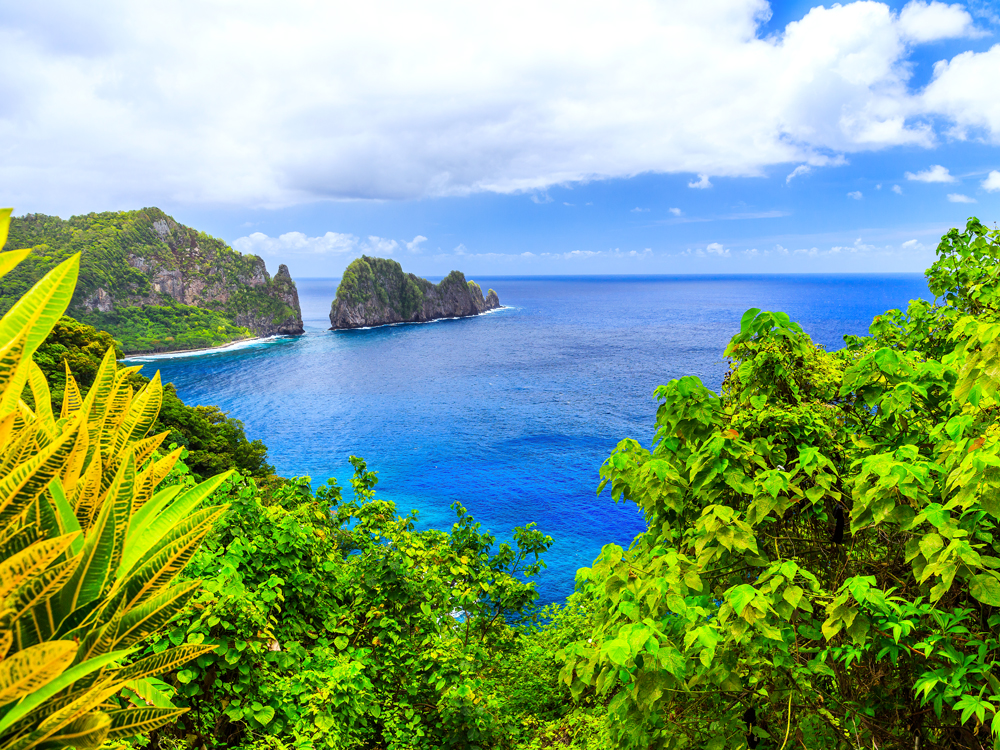
The U.S. territory of American Samoa sits about 2,200 miles southwest of Hawaii and 1,600 miles northeast of New Zealand. Approximately 46,000 people live in its 77 square miles, which consist of five inhabited volcanic islands — Tutuila, Aunu’u, Ofu, Olosega, and Ta’u — and two uninhabited atolls, Rose and Swains Island. Polynesian peoples have inhabited the region for over 3,000 years. After European explorers arrived in 1722, the islands fell under the rule of various colonial powers until 1900, when the territory was formally ceded to the U.S. by the matai (local chiefs) of Tutuila.
The islands of American Samoa are known for their lush tropical landscapes, with about 90% of them covered with rainforest. The National Park of American Samoa — the only U.S. national park located south of the equator — spans three of the islands. It’s home to mountainous volcanic landscapes and unique wildlife including the Samoan flying fox (essentially a large fruit bat). It’s also home to stunning coral reefs and marine life such as rare and endangered sea turtles and humpback whales.
In terms of culture, American Samoans emphasize community, family, and respect for elders, a guiding principle known as fa’a Samoa, or “the Samoan way.” In the capital of Pago Pago, the Jean P. Haydon Museum showcases over 650 Polynesian artifacts, while the Blunts Point Battery, a National Historic Landmark, is home to a rare, still-intact World War II Pacific coastal gun. The Tauese P.F. Sunia Ocean Center also offers exhibits on the island’s natural history and marine environment. For an immersive local experience, head to the Fagatogo Market to peruse traditional artisan crafts and taste Samoan delicacies such as palusami (taro leaves baked in coconut milk) and oka (raw fish marinated in citrus juice and coconut milk).
Northern Mariana Islands
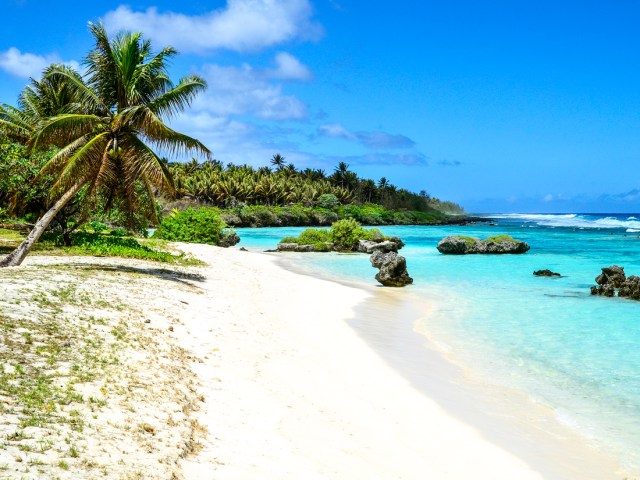
The chain of the 14 northernmost islands in the Mariana archipelago form the territory known as the Northern Mariana Islands (officially, the Commonwealth of the Northern Mariana Islands). Located in the western Pacific Ocean between the Philippines and Japan, the island chain runs roughly north to south, spans about 375 miles, and has a total land area of approximately 179 square miles. The most populated islands are Saipan, Tinian, and Rota. The capital, Saipan, boasts an average year-round temperature of about 84 degrees Fahrenheit — the most equable climate in the world, according to the Guinness World Records.
The approximately 50,000 people who call the Northern Mariana Islands home share a vibrant and diverse culture of Indigenous Chamorro and Carolinian traditions, Spanish colonial influence, and, more recently, Japanese, Filipino, and American contributions. The islands came under U.S. administration in 1975 after an agreement established them as a commonwealth in political union with the United States.
Local festivals such as the annual Flame Tree Arts Festival showcase traditional music, dance, and crafts. Historical highlights include the House of Taga in Tinian, with its ancient latte stones, and the American Memorial Park in Saipan, commemorating World War II. The islands are also renowned for their biodiversity. The Mariana Trench Marine National Monument, the deepest place on Earth, protects over 95,000 square miles of marine life.
Guam
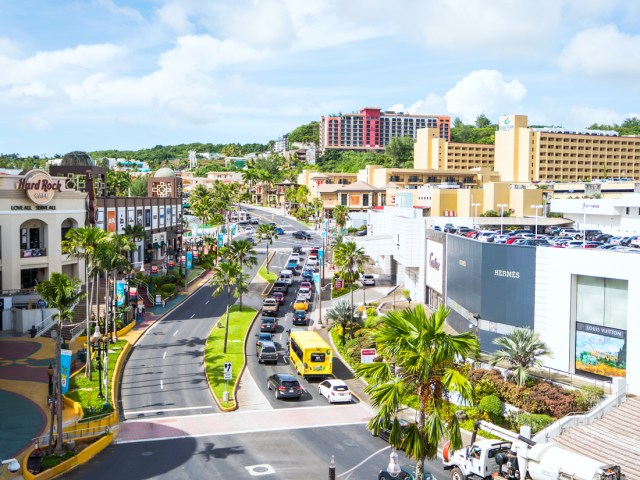
Though Guam is the largest and southernmost island of the Mariana Islands chain, it is a U.S. territory in and of itself. In 1898, following defeat in the Spanish-American War, Spain ceded its former colony to the U.S., and Guam has been a significant American military outpost ever since. The Chamorro Indigenous peoples have inhabited the island for over 4,000 years and still influence the culture of the modern and multicultural island. About 47,000 people speak the endangered Chamorro language, and a local specialty known as kelaguen — marinated chicken, or sometimes seafood, served with red rice — is one of the island’s culinary highlights.
Guam’s landscape is characterized by limestone plateaus in the north, hilly volcanic terrain in the south, and tropical greenery all around, with over half of the island covered in forest. The island’s warm waters make it a popular spot for snorkeling and diving, as do the 42 square miles of shallow coral reefs along its shoreline. Visit the ancient Latte Stone Park for a glimpse into Guam’s Chamorro history, or take in the luxury resorts, soft sand beaches, and shopping in the bustling Tumon Bay.
U.S. Virgin Islands
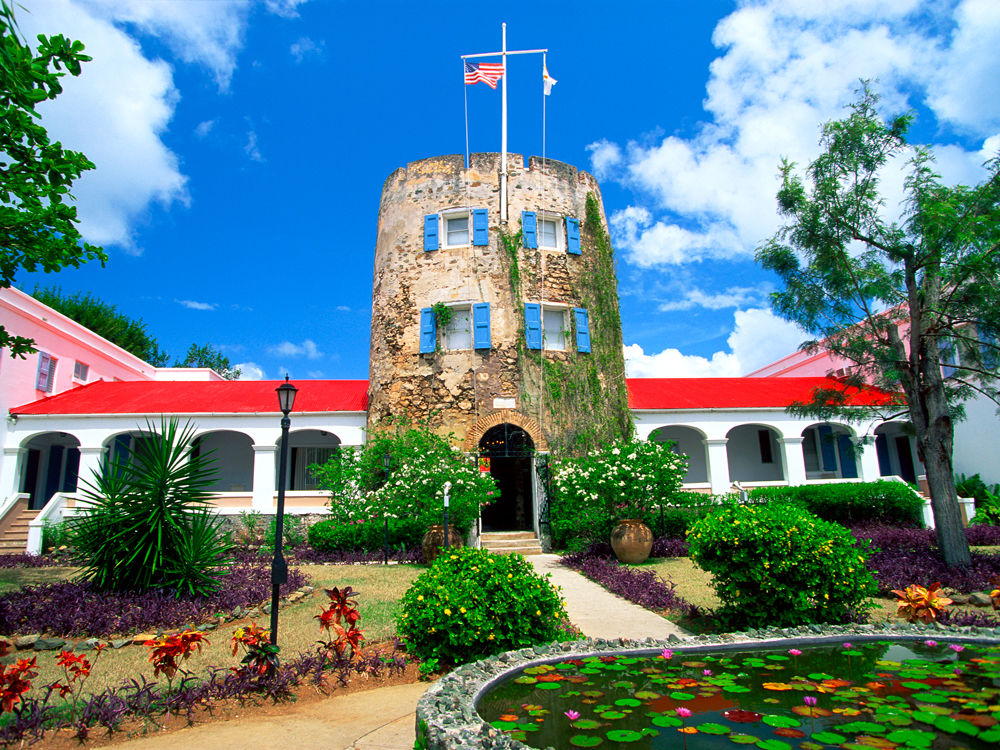
Indigenous peoples have inhabited these Caribbean islands for over 2,500 years, but in 1917, the U.S. acquired the territory — then known as the Danish West Indies — from Denmark for $25 million in gold coin. The main islands of St. Thomas, St. John, and St. Croix, as well as surrounding smaller islands, were renamed the Virgin Islands and became a base for the U.S. Navy during World War I and II. Every year, on May 31, the islands celebrate Transfer Day to commemorate becoming a U.S. territory.
Since the Department of the Interior took over jurisdiction from the Navy in 1931, tourism has become the territory’s defining economic driver, and it isn’t hard to see why. On St. Thomas, the capital city of Charlotte Amalie is famous for its historical Danish architecture and bustling waterfront. Meanwhile, St. John is home to Virgin Islands National Park, and on St. Croix, visitors can explore the colonial-era buildings of the Christiansted National Historic Site or the marine sanctuary at Buck Island Reef National Monument. About 105,000 people call the territory’s 133 square miles home, but upwards of 2 million tourists flock to the Caribbean paradise each year.
Puerto Rico

Spanning 3,500 square miles and housing 3.3 million people, Puerto Rico is the largest and most populous of the U.S. territories. The U.S. took control of the former Spanish colony, along with Guam, following the 1898 end of the Spanish-American War. More than 1,000 years before the arrival of Spanish settlers, the Taíno peoples inhabited the island; their Indigenous history lives on in museums such as the El Cemí Museum and the Caguana Indigenous Ceremonial Site.
San Juan, Puerto Rico’s vibrant capital, isn’t just a place to go for amazing food and beaches — it’s also an architectural dream with styles ranging from Colonial to Baroque, Gothic, and Neoclassical. The island is also home to El Yunque National Forest, the only tropical rainforest in the U.S. National Forest System and a sacred site in Puerto Rican folklore. For decades, there have been discussions and efforts to make Puerto Rico the 51st state, a move that proponents say would benefit the island’s economy and provide other needed federal support. As of yet, however, Puerto Rico remains an unincorporated territory.











